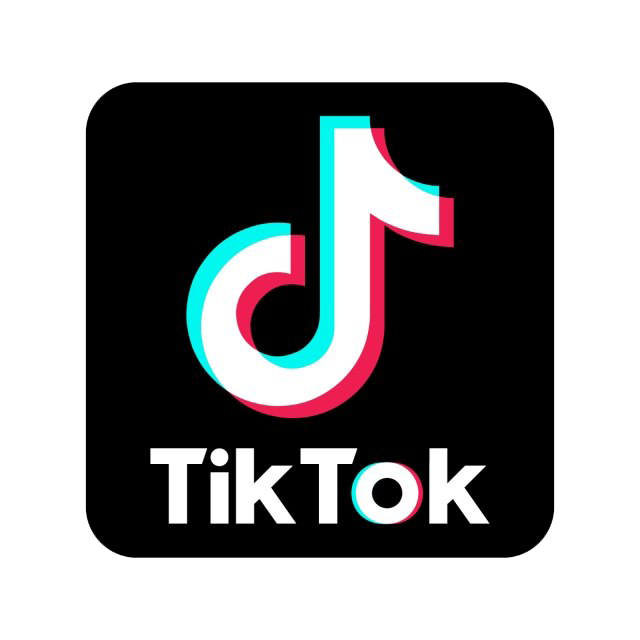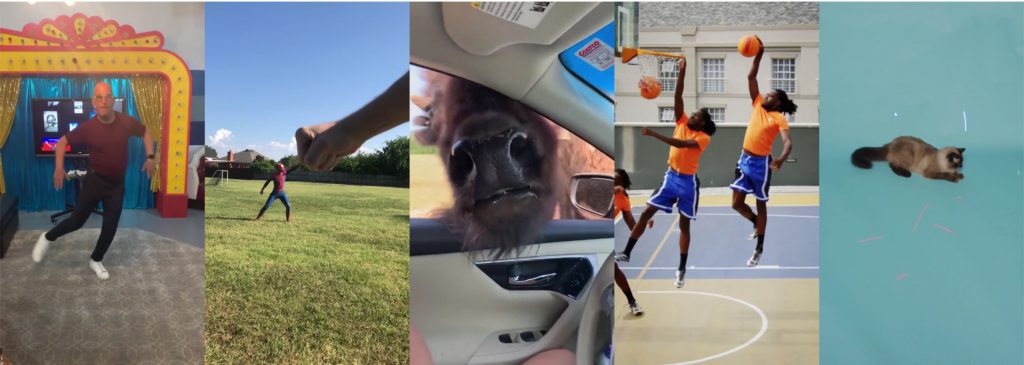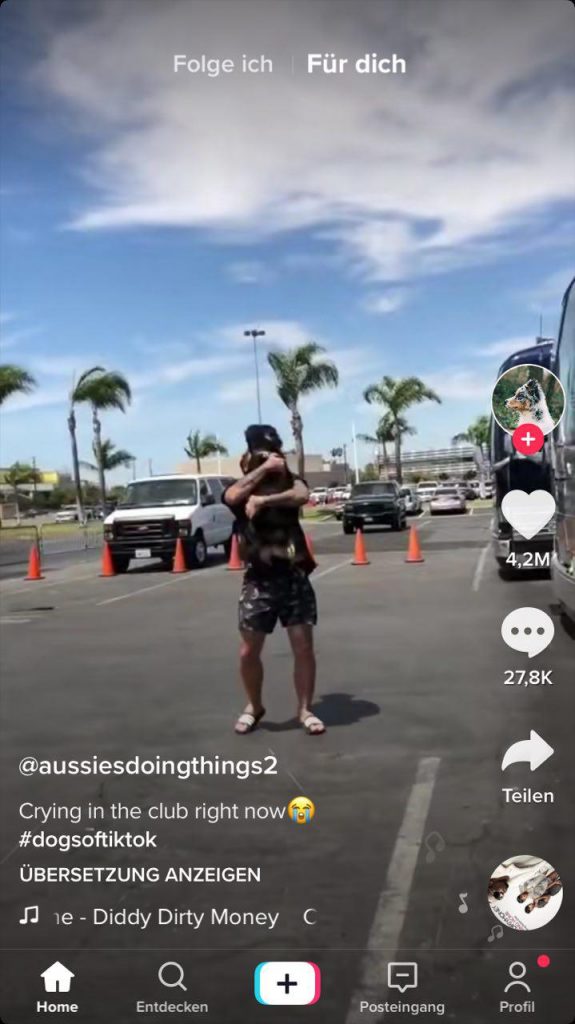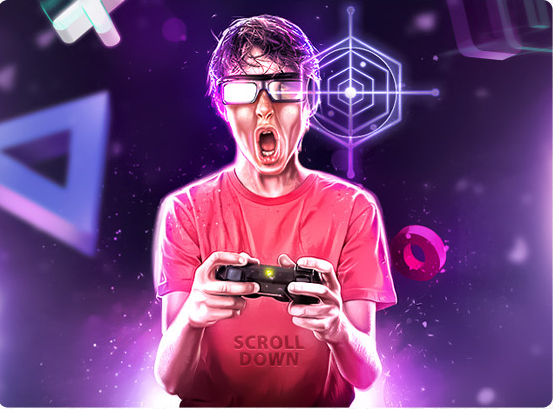On platform aesthetics: TikTok as the next level of the gamification of social exchange online

TikTok has taken the place of being among the most recent cases in social media success history. In just two years since its global launch in 2017, the app has reached the number of 1 billion downloads in 75 languages worldwide (Fannin). TikTok is a product of the chinese machine-learning company ByteDance. And it is this AI-driven specialty of the company, which majorly contributed to its fast-paced viral success: In its essence being a short video distribution platform that allows users to create and share clips with a length of 15-60secs max, TikTok has stripped away the granted social-media principle by which socially networked curation must lie at the center of user satisfaction and replaced it by a sophisticated self-learning algorithm that curates the individual user experience by constantly learning from user’s viewing habits and -preferences and projecting informed content suggestions onto users’ feeds, based on pre-collecting data of user tastes and viewing habits.
This characteristic is essentially mirrored in the interface of the platform: In opening the app, what you see first is not a usual friends- or following- feed as in Facebook or Twitter, but a feature page with the appealing title „For You“ – an algorithmic feed based on videos you have previously interacted with. „For You“ is then rather a recommendation section, displaying content the TikTok algorithm assumes to be of your interest, basing these notions on previous user behavior as well as a general database of collective user interest distributions – the infamous filter bubble, so often criticized for its polarizing impact on users’ content reception (Pariser; Yardi and Boyd 1), is then a desired feature of the platforms workings (Herrman). Draping each user into his or her personally curated filter bubble is in this sense meant for users to reach a deeper mode of engagement with the platform as they only see what they supposedly want to see. In its abundance of user-created short video content, often taken by a smartphone camera or a related device, TikTok is then like an infinite reality show that constantly changes the locus to do only one thing: entertain the user. Therein TikTok breaks with the usual idea of the ‚audience‘ – as a larger group of individuals towards which a certain kind of content is tied to – and focuses on the user as ‚auditor’: an individual to be entertained, for which content is auto-curated by an algorithmic unit.
This concept ties in perfectly with TikTok’s approach of creating low-barrier thresholds for new users in uploading content, as well as reaching larger audiences without having a large number of followers. Providing a broad range of custom video upload filters, as well as an abundance of hashtag-trending clips in the ForYou section, new-coming users can easily find a topic to produce content for, as well as having the proper technical means to upload their works in an appropriate, platform-standardized quality. Using hashtags to categorize content, jumping on trends instead of creating larger bases of follower, users are then encouraged to „jump from audience to audience, trend to trend, creating something like simulated temporary friend groups, who get together to do friend-group things“ (Herrman).

From this angle, it becomes one the fascinating features of TikTok that it not online provides a new way to platformize online content and engage user groups, but that beyond that it does so by breaking with established design rules of app interface and – aesthetics (Kobie). Unusual design decisions in the app are for example the instant-play of videos when opening the app, the center-placed but ambiguously layouted and untagged camera feature, or the custom white text that runs as an overlay on posted videos (ibid.).

As with any other media object, it is then the interface that represents the imperative of the application’s function (Manovich 37; Galloway 10), while at the same time it gives imperative to the way in which cultural content is circulated on the specific platform it represents. According to the new media scholar Mel Stanfill, this imperative of the interface is also always part of a normative claim towards a platform’s inherent originality (Stanfill 1061): so to say an inbuilt ideal of what the platform is supposed to strive for. In the case of Facebook, the normative claim e.g. states that friendships are key while for Twitter it is real-time connectivity to essential events and people. Both of these companies have built their platform services around the successful capitalization of these declared ideals by actually embedding them, via like-buttons, platform-friendships, followers, and tweets, into the design of their platforms. And both of these companies, in actual contrast to TikTok, have built the social network of friends and followers as a central dimension of feed curation into their algorithmic design.
TikTok user feeds then draw from the uploaded content of the platform’s overall community and are curated by an algorithm only. Within this model, it is user engagement with video content per se that is key to platform dynamics. Only if users are exposed to video clips they like and are excited by, they are likely to long-term engage with the app, and only in this case will the user-base of the company increasingly grow and contribute to the companies net worth. At TikTok then the aesthetic of the medium itself becomes the key normative factor of the platform: It is not sufficient to the see videos of one’s friends only. First and foremost, the content needs to be new, innovative and exciting, bound to the aesthetic standards and quality expectations the platform itself set through pre-delivered video filters and camera features. Only if the relative newness, as well as the aesthetic standards provided appeal to large user bases, content might go viral. In this sense, TikTok is being revealed as experiential field in which an audiences appeal to new content aesthetics can be explored and tested. Through its specific app design, video publishing and user engagement are platformized by creating the context in which new and emergent media aesthetic practices can flourish and grow.

TikTok can then be seen as a next step within social media logic. Drawing from the established social media principles of programmability, (content) popularity, connectivity and datafication (Dijck and Poell), it then adds a stance of gamification to it that replaces user engagement which was previously bound to a platform’s representation of a user’s social network, with user engagement that draws from instant data-driven feedback on users’ personal content preferences. The platform is exciting insofar, as with only two years in business and content-wise often rather a toy and testing-ground for younger audiences, it still stands at its beginnings, but is likely to grow with the help of its mainly young user base into a mature and innovative user-driven video entertainment portal. On the other hand, it might be that the inherently gamified, advertisement-driven value creation model of TikTok will contribute to the growing tendency of platforms to monopolize the production of content towards their own pre-established platform standards and to ultimately foster the monopoly and distribution of an aesthetic of video entertainment which favors the exciting over the substantial, and the gain in user’s attention over a systematic gathering of facts and informativity.
Dijck, José Van, and Thomas Poell. Understanding Social Media Logic. 2–14, 12 Aug. 2013. Crossref, doi:10.12924/mac2013.01010002.
Fannin, Rebecca. ‘The Strategy behind TikTok’s Global Rise’. Harvard Business Review, 13 Sept. 2019, https://hbr.org/2019/09/the-strategy-behind-tiktoks-global-rise.
Galloway, Alexander R. The Interface Effect. Polity, 2012.
Herrman, Jon. ‘How TikTok Is Rewriting the World’. New York Times, 3 Oct. 2019, https://www.nytimes.com/2019/03/10/style/what-is-tik-tok.html.
Kobie, Nicole. ‘TikTok Breaks All the Rules of App Design – but Somehow It Still Works’. Wired Magazine, 25 Feb. 2019, https://www.wired.co.uk/article/tiktok-snapchat-app-design.
Manovich, Lev. ‘Media After Software’. Journal of Visual Culture, vol. 12, no. 1, Apr. 2013, pp. 30–37. DOI.org (Crossref), doi:10.1177/1470412912470237.
Pariser, Eli. The Filter Bubble: How the New Personalized Web Is Changing What We Read and How We Think. 2012.
Stanfill, Mel. ‘The Interface as Discourse: The Production of Norms through Web Design’. New Media & Society, vol. 17, no. 7, Aug. 2015, pp. 1059–74. DOI.org (Crossref), doi:10.1177/1461444814520873.
Yardi, Sarita, and Danah Boyd. ‘Dynamic Debates: An Analysis of Group Polarization Over Time on Twitter’. Bulletin of Science, Technology & Society, vol. 30, no. 5, Oct. 2010, pp. 316–27. Crossref, doi:10.1177/0270467610380011.